Kali iod is a seldom used remedy but well proven and recorded in our materia medicas. The mental and physical characteristics of this remedy have been explained very well by our masters.
Kent gives a very clear picture of this remedy’s mind. “This remedy has a peculiar mental state. There is a very strong degree of irritability, cruelty, and harshness of temper. He is harsh with his family and with his children; abusive. It will take all the sense of refinement out of his mind and then he will become sad and tearful.
Extremely nervous and must walk and be on the go.” His physical generalities have been described thus: “If he remains in a warm room, he becomes weak and tired, and feels as if he could not stir, does not want to move, and does not know what the matter with him is.
He is worse in the warmth of the house, but as soon as he goes into the open air he feels better, and as soon as he begins to walk, he feels still better and can walk long distances without fatigue; goes into the house again and becomes weak and tired and exhausted. A nervous and mental exhaustion comes on from resting.
Old gouty subjects who must keep in motion, and must keep in the open air, who are always too warm, and cannot endure any degree of warmth in the room, who suffer more from their gouty pains when keeping quiet, those who are fatigued when keeping quiet and can walk and move without fatigue in the open air, especially when it is cold, with – enlarged joints, with restlessness, anxiety, nervousness, harshness of the temper and great irritability, alternating with weeping.”
The physical/local sufferings are described by Kent and Boericke thus: “The nose comes in for much trouble. In old syphilitic catarrhs they blow out great crusts and pieces of bone; syphilitic ozaena; the bones of the nose are very sensitive to touch and become necrosed, and the nose flattens down and becomes soft. It is deprived of the bony framework that holds it in shape and settles down flat, leaving only the red tip. Extreme pain at the root of the nose like Hepar.”
“The profuse, watery, acrid coryza that the drug produces, serves as a sure guiding symptom, especially when associated with pain in frontal sinus. It acts prominently on fibrous and connective tissues, producing infiltration, oedema, etc. Glandular swellings. Purpura and haemorrhagic diathesis.”
“Female: Menses late, profuse. During menses uterus feels as if squeezed. Corrosive leucorrhoea, with subacute inflammatory conditions of the womb in young married women. Fibroid tumours, metritis, sub-involution, hypertrophy.”
“Extremities: Severe bone pains. Periosteum thickened, especially tibia, sensitive to touch. Rheumatism; pains at night and in damp weather. Contraction of joints. Rheumatism of knees with effusion. Glands enlarged, indurated. Hives. Rough nodules all over, worse any covering; heat of body intense. Tendency to oedematous swellings, eyelids, mouth, uvula, etc.”
“Modalities: Worse, warm clothing, warm room, at night, damp weather. Better, motion, open air.”
Boericke states the materia medica of Kali iod thus:
The profuse, watery, acrid coryza that the drug produces, serves as a sure guiding symptom, especially when associated with pain in frontal sinus. It acts prominently on fibrous and connective tissues, producing infiltration, oedema, etc. Glandular swellings. Purpura and haemorrhagic diathesis.
Female – Menses late, profuse. During menses uterus feels as if squeezed. Corrosive leucorrhoea, with subacute inflammatory conditions of the womb in young married women. Fibroid tumors, metritis, sub-involution, hypertrophy.
Extremities – Severe bone-pains. Periosteum thickened, especially tibia; sensitive to touch. Rheumatism; pains at night and in damp weather. Contraction of joints. Rheumatism of knees with effusion.
Glands enlarged, indurated. Hives. Rough nodules all over, worse any covering; heat of body intense. Tendency to oedematous swellings, eyelids, mouth, uvula, etc.
Modalities – Worse, warm clothing, warm room, at night, damp weather. Better, motion, open air.
Phatak:
Generalities – Potassium Iodide was used as anti-syphilitic remedy. – It acts prominently on fibrous and connective tissues, producing infiltrations, oedema. – Glands are swollen; or atrophied. – Exostosis, swelling of the bones, rickets, purpura and haemorrhagic diathesis come under its influence. – Diversity of lesions, diversity of aggravations, with many tedious symptoms, without any one feature being in prominence, calls for this remedy. – Gouty – rheumatic – syphilitic diathesis. – Stubborn chronicity. – Feels used up. – Crushing or sharp stitching pains. –
Discharges are COPIOUS, watery, acrid, salty; thick; green or foul. – Diffused soreness; after pains; of affected part. – Pains long after injury. Weakness, emaciation. – Arteriosclerosis. – Craves motion in open air. – Cachexy. – Contraction of muscles and tendons, chronic arthritis, with spurious ankylosis. – Actinomycosis. – Coldness; of painful part in bones. – Fungoid diseases. – Dropsy, from pressure, from swollen glands. Worse – Heat. – Pressure. – Touch. – Night.
We present three cases where this seldom used remedy was of benefit
Case 1
62-year-old man (director of the enterprise), consulted for chronic synovitis of the left knee joint on 10/19/2019. He suffered pain, swelling, inability to walk for a long time or carry out his usual physical activities.
He described the pain as bursting (3), there was stiffness at the beginning of walking, improvement from movement (2), but prolonged exercise was impossible due to worsening pain and swelling. Prior to allopathic treatment (see below), the knee joint could not be touched because of pain, and there was marked aggravation from heat (3), and amelioration from cool applications (3).
But at the time of examination, the severity of the modalities was unclear due to the suppression of symptoms. He had a history of chronic injuries (in the past he was an athlete and enjoyed skiing). The patient was upset due to the lack of effect from numerous treatment options. He mentally quarrelled with doctors (and noted some obsession with these thoughts, which, however, did not affect him).
After a course of antibiotics, bad breath appeared (2), the tongue was covered with a grey coating and teeth marks. For the last four years, he had tinnitus (3), triggered from emotional stress. The audiogram revealed hearing loss on the right side, which was associated with circulatory disorder. He also had kidney stones. In the last month, he had itching in the thighs (2) (probably a side effect of the drugs taken, he also reported having enlarged liver that was noted on the ultrasound).
Treatment history prior to homeopathy
For the deforming arthrosis of the left knee joint, and in 2018, a course of ultraphonophoresis with Gordox (aprotinin, a fibrinolysis inhibitor) was performed without improvement.
April 2018: in the orthopaedic clinic, arthroscopy of the left knee joint with partial resection of the medial meniscus, chondroplasty of the internal process of the femur, and sectoral synovectomy were performed.
May 2019: joint puncture, excess fluid evacuation and 5 sessions of PRP therapy (a method of treating joints using authentic platelet-rich plasma of the patient) and a course of dexamethasone magnetophoresis on the area of the damaged joint were performed.
In the summer of 2019, on the recommendation of orthopaedists, he received a course of balneotherapy at one of the thermal resorts in Europe.
In the fall of 2019, due to the lack of positive dynamics, he received a course of high-intensity magnetotherapy (SIS – Super Inductive System Elite) and the antibiotic levofloxacin, which gave a short-term improvement with a subsequent return of complaints. On MRI of the left knee joint on April 1, 2019 and August 28, 2019, deforming arthrosis, thickening of the structure of the medial collateral ligament, and tissue oedema were reported (Fig.1). The result of the analysis of the synovial fluid on September 2, 2019, showed no microorganisms, and signs of inflammation, and signs of tissue proliferation seen (Fig. 2).
Fig. 1 MRI of the left knee joint on 28/8/2019
Fig. 2. Synovial fluid assay on 2/9/2019
Serological examination of blood and synovial fluid from the joint on September 2, 2019 was negative for ASLO, RF, CRP, leukocyte esterase. Agglutination reaction with a polyvalent S. aureus vaccine strain was present in the synovial fluid (1:1280; diagnostic titre 1:640). orthopaedist suggested another course of antibiotic therapy and stem cell treatment, but the patient refused.
Prescription on 10/19/2019:
Fig 3. Repertorisation on 10/19/2019
Based on the repertorisation of his symptoms (Fig. 3), he was prescribed Kali iod 200CH – one dose
Levels of health analysis: He was group B, level 4. He is a healthy person with a strong constitution but suffers from exacerbation of chronic pancreatitis or renal colic 1-2 times a year if he overeats or abuses alcohol (these problems are easily solved by dieting). He suffers from colds a couple of times a year with a high temperature. Clear and distinct symptoms indicate a fairly high level of health.
Follow up:
Telephone consultation on 06/15/2019: in the first week after the remedy, there was an aggravation of pain, swelling and tinnitus, followed by an improvement in tinnitus by 30%, and knee joint complaints by 90%. He was especially better in the mental/emotional level. For the last month, there was a relapse of complaints related to the knee joint, as the patient did not give up coffee and extreme sports.
Prescription: Kali iod 200CH – one dose.
Follow ups:
Telephone consultation 10/20/20: sometimes tinnitus worries because of emotional stress. There are no complaints of knee joint. He was advised a repeat MRI of the joint to determine the dynamics of arthrosis, but the patient refused as he sees no need for it.
Currently, complaints of tinnitus during overexertion remain.
Outcome: Kali iod was chosen on the basis of affinity to the knee joints (pathology symptom strategy), keynote symptoms (better with cold applications), and the totality of symptoms. Due to the patient’s strong constitution, the allopathic suppression did not cause disturbances in health, and the remedy produced a lasting positive effect. Taking into account the data of MRI and arthroscopy (joint tissue proliferation), the patient was at risk of needing joint prosthetics due to the progression of arthrosis. The remedy was able not only to improve the condition of the joint while maintaining the quality of life of the patient, but there was also no need for arthroplasty.
Case 2
41-year-old lady (lawyer), a thin brunette, consulted on May 30th, 2022, for somatoform dysfunction of the nervous system (ICD F45). Since spring of 2020, she suffered palpitations at night around 4.00 – 5.00 am, (sometimes around 2.00 am). She woke up with a sensation of heat (3) and palpitations (3), which was accompanied by anxiety, pulsations in the body (2), and fingertips.
She needed to breathe deeply, and she would end up crying from self-pity. She believed that the reason for her suffering was the social restrictions levied during COVID-19 breakout. She travelled very actively and enjoyed socializing and working and these restrictions were difficult on her.
Initially, she developed panic attacks during the day (striving for fresh air, motor restlessness, palpitations, anxiety). In December 2020 she consulted a psychiatrist for these complaints, who diagnosed her of somatoform dysfunction of the nervous system.
She was prescribed gidazepam (benzodiazepine, anxiolytic), melitor (psychoanaleptic), buspirone (anxiolytic). But they aggravated her complaints at night during sleep (3): (“It was as if I were abruptly thrown out of sleep”). Due to the deterioration in this treatment regimen, the psychiatrist added Trittico (trazodone hydrochloride, an antidepressant).
She took it from October 2021 for three months, but the night attacks persisted. After being vaccinated against COVID-19, Moderna 2 doses, she noticed a sudden increase in the size of the sebaceous cyst on the head, which was removed in December 2021. After this operation, attacks of nocturnal palpitations worsened greatly.
Other past diseases: In October 2020 the patient had also taken Dostinex (cabergoline, a prolactin inhibitor, a direct stimulator of D2-dopamine receptors of pituitary lactotropic cells), because of endometrial hyperplasia and prolactinemia up to 88 ng/ml. However, after that, an endometrial polypus appeared, which led to curettage of the uterine cavity in December 2021.
20 years ago, she underwent resection of the right lobe of the thyroid gland due to a large nodule. She complained that even though she did not have children, her mammary glands since adolescence were “as if exhausted, hanging, they had no turgor” and hurt, and swelled before menstruation.
In general, the patient was very active, spoke quickly, loved change, and traveling. She did not tolerate the sun and heat (3). She was also very sensitive to both allopathic and homeopathic medicines.
From April 2021, she was periodically treated by another classical homeopath, but she had to turn to a psychiatrist as the remedies had not helped.
Health level analysis: Health group C, level 7. Until 2020, she was quite healthy on the psychological level, before the lockdown and Dostinex treatment. She suffered from minor colds, but the fever temperature had not been higher than 37.3 since 2020.
Prescription on 30/05/2022:
Fig. 4 repertorisation on 30/05/2022
As per the repertorisation (Fig. 4), Kali iod 30 CH – once a day for three days was prescribed.
Follow up:
02/09/2022: Significant improvement on the psychological level (“I feel as good as in my youth, I’m just happy”). Attacks of nocturnal palpitations persisted for three weeks after the remedy, and then gradually disappeared. There were no panic attacks. Sleep returned to normal.
A month after the remedy, profuse greenish yellow lumpy leukorrhea began (in the past, she had repeatedly suppressed thrush using vaginal suppositories), and resolved in two weeks. There was also a return of constipation within a week (also old complaint).
Prescription: wait.
Telephone consultation on 05/11/2022: the patient messaged asking if she should take the remedy again, because a few days ago, her beloved dog died suddenly, and that same night she was disturbed by palpitations when waking up, but then everything went away.
Prescription: wait.
January 2023: There were no complaints so far. For the first time in the last ten years, 8 months after the remedy, she fell ill with an acute respiratory infection with a temperature of 38oC, for which she did not take anything.
Currently she is maintaining well.
Outcome: In this case, the prescription was based on the effect of the Kali iod to cause fibroids and glandular atrophy (history of nodular goitre, endometrial hyperplasia, atheromas, atrophic mammary glands), Essence (anxiety, restlessness, desire for activity), and the ability of the remedy to cause nocturnal palpitations and hot flashes. But since the patient is sensitive, the 30CH potency was chosen. The outcome was a betterment in all levels with the relapse of the suppressed vaginal thrush and constipation and an ability to raise high fever again.
Case 3
A girl of 11 years’ age was brought to consultation by her parents on 08/04/21. She suffered from chronic nasal obstruction. She received many courses of treatment with nasal drops (vasoconstrictor, hormonal), but without effect. The only solution finally proposed by otolaryngologists was the removal of adenoids.
She was worse in winter (3), or when the weather was cold in summer. She had nasal congestion, but no discharge. She was worse at night, especially when lying down (3), sometimes had to sleep sitting up. In a stuffy room, there were nosebleeds that were difficult to stop. She could not stand stuffiness at all (3), she was hot, with a feeling of heat in her hands (3), and in her feet (2).
Past medical history: at the age of three days, after the BCG vaccination, the child developed ptosis of the right upper eyelid, which disappeared after a few months, but each time appeared with respiratory infections. At 11 months old, due to an intestinal infection, she received antibiotics that caused Quincke’s oedema (hormones were used).
At the age of two, when her mother tried to wean the girl from the breast, she experienced a real shock, refused food for a week, and suffered from insomnia. She suffered recurrent otitis media (treated with antibiotics) till the age of three years. She had a high temperature 2-3 years ago, without any signs of infection.
From the age of six, a neurosis-like state developed, manifesting in ritual behaviour. For example, she demanded to tie shoelaces of the same length, she drew only with a black pencil, her clothes interfered with her, she tore her hangnails to blood when hysterical, and she was jealous of her mother giving attention to her younger sister. For last two years she has been treated by a psychiatrist for obsessive-compulsive disorder (ICD F42), She was given Zoloft 25 mg per day (sertraline is an antidepressant, a selective serotonin reuptake inhibitor), but this did not help to release her from obsessive thoughts (2) but improved her sleep. Obsessive thoughts appeared after a friend’s mother got cancer, and now every time she remembers the friend, she could not stop thoughts about a possible cancer in her own mother. She suffered more at night (3) from these thoughts, and they prevented her from sleeping. She was afraid of snakes (1) and felt lonely. She liked to take risk like doing parkour and climbing trees. She was artistic and fond of painting. She could not be at rest for a long time, walked back and forth and touched all the objects while at observation at the homeopath’s office. Thirst was less, slightly more in the evening. She liked meat (3), vegetables, fruits, butter and bread, eggs (2) (but lately there has been an aggravation from eggs). She did not like buckwheat (2), Milk (3) and dairy products.
Family history: Her mother suffered restless legs syndrome and anxiety; her sister had generalized anxiety disorder (both were being treated by a psychiatrist), her maternal grandmother had schizophrenia and had committed suicide at the age of 43, her cousin had panic attacks.
Level of health analysis: Health group C, level 8, because the disease is concentrated on the mental level, in fact – we are talking about a one-sided disease. There were no acute illnesses with high temperature for several years)
Prescription on 08/04/2021:
Fig. 5 repertorisation on 08/04/2021
Based on the repertorisation (Fig 5), Pulsatilla 1M was given daily for ten days (with the gradual tapering of Zoloft).
Follow up
13/12/2021: there was no aggravation after the remedy. Zoloft was stopped a few days later. Obsessive thoughts became noticeably less for a couple of weeks, but then they returned almost to their previous state. They were also worse at night, with a slight emotional tension (for example, could not choose a background while drawing, hysteria beginning with obsessive thoughts).
The reason for this aggravation of OCD was, as per her parents, the death of her beloved teacher a month ago. Now the girl cried when she was tormented by thoughts, consolation did not help. During these months there was a clear improvement in nasal breathing, which made the parents very happy. But in the last month, nasal congestion had increased again (3).
The symptoms had changed now. It got worse in a hot room (3), the ears were blocked and the bones of her nose hurt (2). The back of the nose became cyanotic and swollen. She felt the best in fresh cool air (3).
New symptoms that had appeared this time were:
- increased appetite, ate a lot and often (3)
- soreness of the hair on the head (2)
- it was impossible to comb it
- pain in the bones of the nose and swelling with congestion (2) (paragraph 153 Organon).
The heat in the hands and feet had disappeared. Food modalities had not changed.
Analysis: Pulsatilla 1M was not similia but only partially similar. Therefore, the remedy caused a temporary improvement in obsessive thoughts and nasal congestion, followed by a return of complaints. There was also no initial aggravation.
The appearance of new symptoms in the presence of a closely related remedy responds to paragraphs 182 to 183 of the Organon: “Thus an imperfect choice of remedy, which was almost inevitable … contributes to the full appearance of the symptoms of the disease and facilitates … the discovery of a more appropriate remedy”, “Therefore, as soon as the beneficial effect of the first dose of the first remedy has ceased… a new examination of the disease should be made… and the second homeopathic remedy chosen accordingly… as the group of symptoms has become larger and more complete.”
This is the reaction VIII out of 22 possible to a homeopathic remedy (Science of Homeopathy, Vithoulkas) in patients with a low level of health, levels 6 – 9 (Fig. 6).
Fig. 6. Graphical representation of response to remedy with appearance of new symptoms while no change in the previous existing symptoms
Prescription on 13/12/2021: As per the repertorisation (Fig 7), Kali iod 200CH – three doses were prescribed.
Fig. 7. Repertorisation on 13/12/2021
13/06/22: There was an aggravation in the form of a worsening of obsessive thoughts, for two weeks. They improved when otalgia (suppression of otitis with antibiotics at an early age) set in, with serous discharge from the ears. Nasal congestion gradually disappeared completely one month after the remedy.
There was a brief return of heat in the hands and feet for a few days. A month ago, she suffered from pharyngitis with a subfebrile temperature of 37.5oC, which she recovered from without treatment (her parents remembered that at the age of nine she had infectious mononucleosis and was treated with antibiotics).
Two months after the remedy the manifestations of OCD completely disappeared. There was an aggravation of the complaints after the ingrown toenail was surgically treated with local anaesthesia, but it lasted 2-3 days and went away on its own without treatment.
Telephone consultation on 12/01/23: the girl began to get sick with acute respiratory infection, more often with a high temperature, but she usually managed to cope with drinking plenty of water, vitamins and sorbents. Once, she had to use an antipyretic.
Analysis: This indicates a transition to health group B. There were no manifestations of OCD during this time, nasal congestion is no longer noted.
In low-health patients, with a weakened constitution, when the symptoms are suppressed by courses of allopathic remedies, it is not always possible to quickly find similia. In this case, we were dealing with a child with the hereditary burden of mental illness in close relatives and an early manifestation of OCD in the girl herself after the suppression of somatic diseases by chemical pharmaceuticals and vaccination.
Therefore, correct constitutional treatment and avoidance of suppression in the future should strengthen the child’s health to such an extent as to ensure the stability of the protective mechanism both on the physical and psychological levels.
Kali iod turned out to be a well-chosen simillimum, which is evidenced by the return of old symptoms that were previously suppressed by allopathy and a general improvement in the condition, especially pronounced on the mental-emotional level.

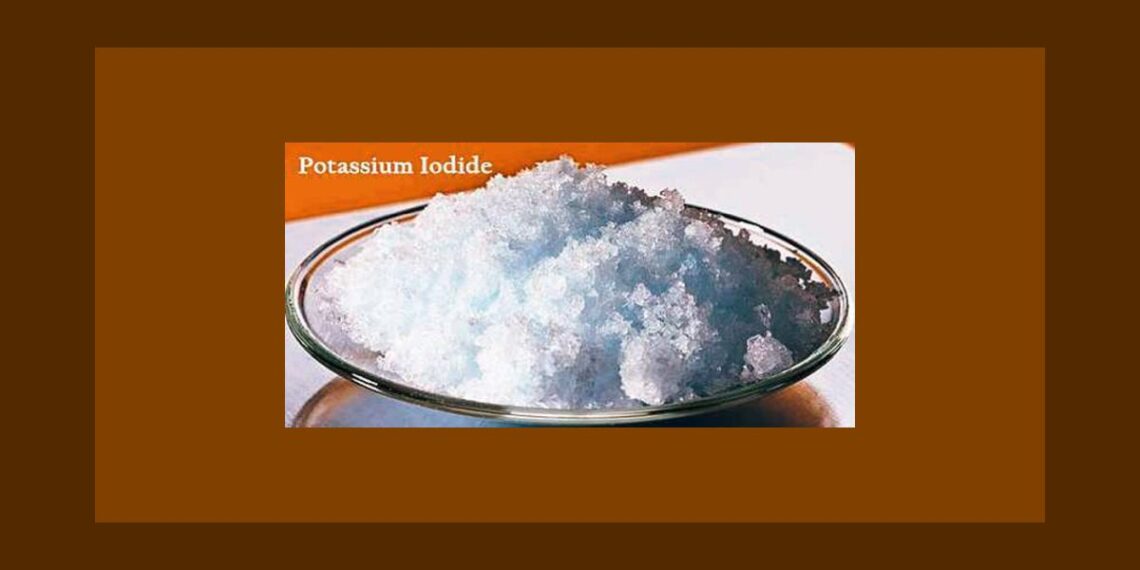
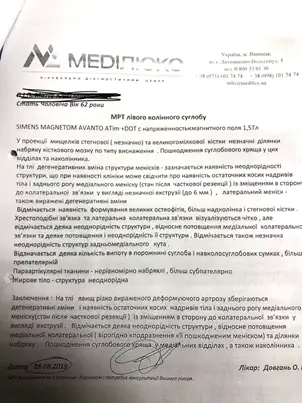
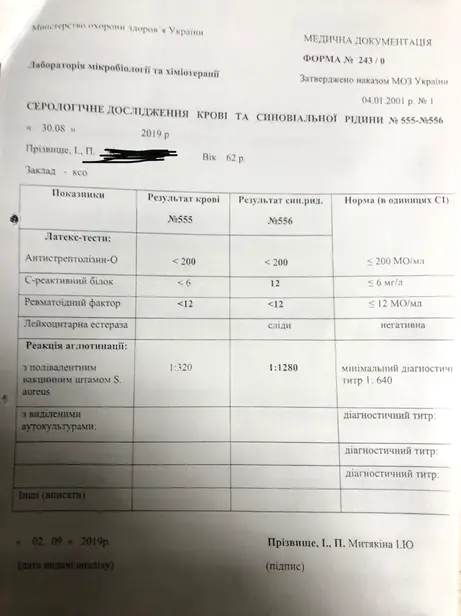
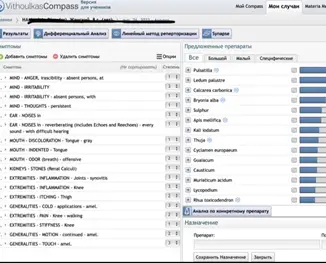
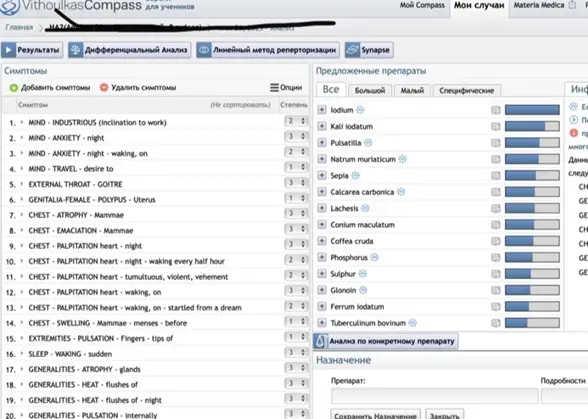
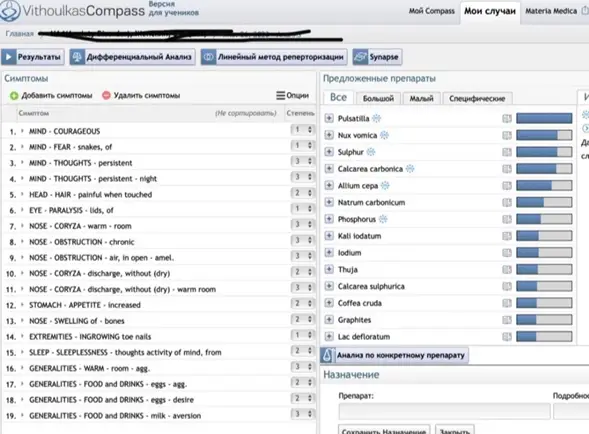
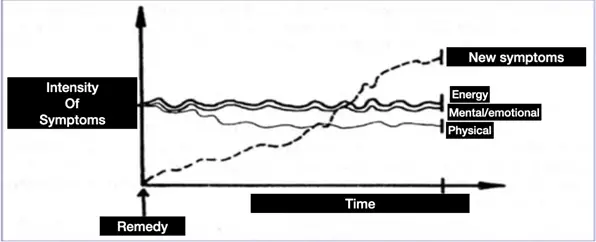
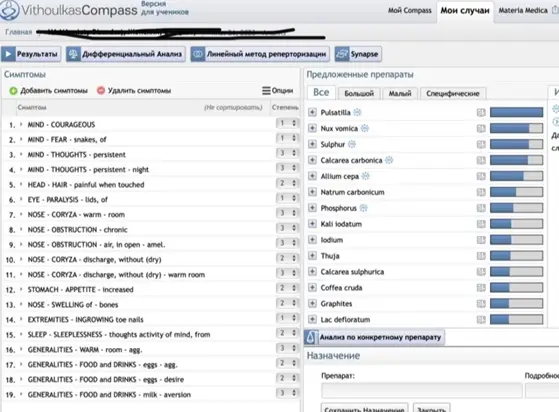
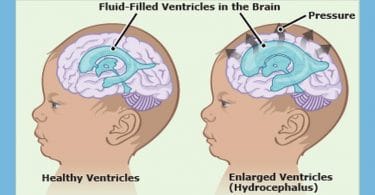
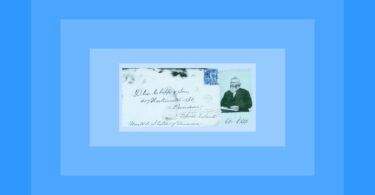


Bravo, Doc!